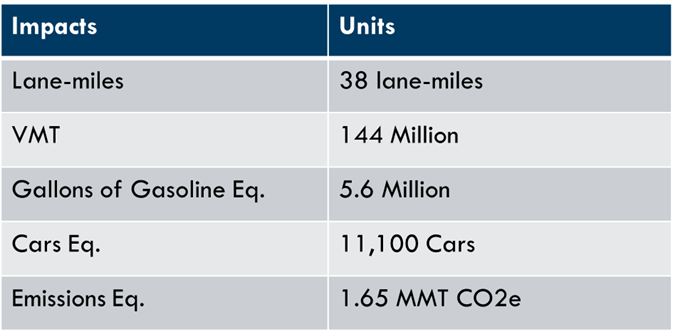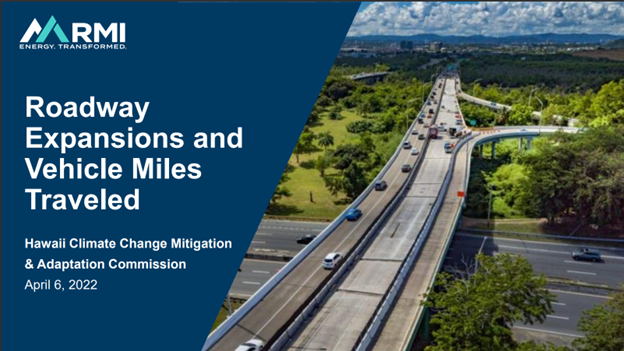Roadway Expansion and Vehicles Miles Traveled

Building More Roads Leads to More Traffic and Greenhouse Gas Emissions
Counter to what we might find logical, building more roads can lead to more traffic. Perhaps less surprising more roads often mean more GHG emissions. This is because more roadways often lead to an initial reduction in travel time, and thus encourages more people to make trips via their car. This eventually leads to more traffic congestion and GHG emissions. A study conducted by RMI found that the U.S. cannot meet the 1.5 Celsius warming of U.S. climate ambitions without shifting the way we move or where we build. RMI identified at least five ways to make these shifts:
- Build more housing, specifically near places that are essential.
- Correctly price the use of the road and the ownership of vehicles
- Stop expanding roadways and remove low-usage roadways in the future.
- Redesign the streets to prioritize buses, walking, and rolling
- Implement transportation demand management measures, like teleworking
Click on the image to view a summary of RMI’s findings and proposed projects in the State of Hawaii
Impacts of Hawaiʻi’s Roadway Widening Projects
The State Climate Commission worked with RMI to analyze and estimate the long-term impacts of roadway expansion projects in Hawai‘i. As of 2022, nine planned road widening projects would add an additional 38 lane-miles to the state’s roadways.


Using RMI’s SHIFT tool these nine projects are estimated to add an additional 144 million vehicles miles traveled, the equivalent of an additional 11,100 cars on the road and 1.65 MMT CO2e or 19% of the state’s total transportation emissions. Without careful evaluation and mitigation in design, these new roads and lanes make it that much harder to meet our climate goals.
